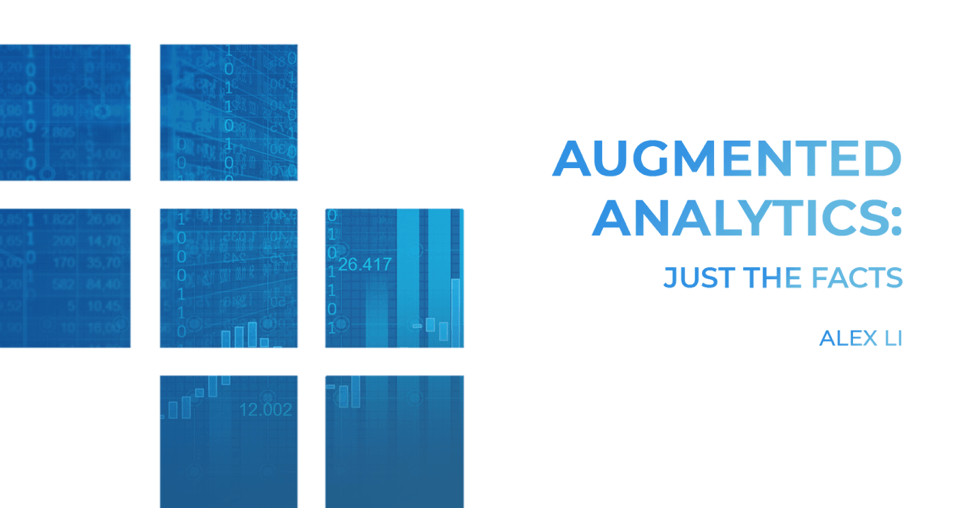Augmented Analytics – 1/4: Just the Facts
Part 1 of a series about Augmented Analytics
The world is flooded with data, which is both a blessing and a curse. We’ve developed an astonishing array of tools to measure outcomes and to track events, giving us the ability to describe the past and predict the future, with bewildering accuracy in some cases. But we’ve also created a data deluge that often overwhelms those who try to swim its currents. There aren’t enough hours in the day to analyze all the data available to even a single organization.
Gaining insights from data is a daunting challenge for most organizations. The average data analyst can easily pick out a couple variables from your data lake and generate a graph or a chart that shows that your sales have decreased by 19% from last quarter. But it’s much more difficult to determine why sales dropped. Is it a seasonal fluctuation? Does it reflect an industry-wide decline? Or is it proof that your business model needs to be tweaked? In other words, it’s easy to show what happened. It’s far more difficult to explain why it happened.
Augmented analytics helps organizations answer those all-important “why?” questions. For those who aren’t yet familiar with the concept, the term “augmented analytics” refers to any service that uses AI to analyze data and to generate automatic insights that allow organizations to make more informed decisions. And it’s poised to transform the way organizations interact with data and with the world.
The delivery of “actionable” insights sets augmented analytics apart from traditional analytics. Like an expert analyst, an AI-enabled augmented analytics system draws lines between data points and the actions an organization can take to address problems revealed in that data. But because AI-powered augmented analytics is so much faster than even expert analysts, it can also pore over reams of data from outside the organization. So-called “benchmark analytics” puts the data in context. Analysts just don’t have the hours in the day for such work.
Besides saving time, which almost always translates into money, augmented analytics also empowers people within an organization. Without augmented analytics, an organization’s ability to analyze data is only as good as its data analysts, and others within the organization usually only know as much about their data as the analysts tell them. The beauty of augmented analytics is that it provides anyone who uses the system with actionable insights. It essentially makes everyone who uses it a domain expert. Sales, procurement, HR—everyone.
With augmented analytics, insights are delivered faster and for less money, knowledge is decentralized, and decisions are more data-driven. There’s a reason that augmented analytics has been called the third major disruption in the field of data analytics.
In our next post, we’ll take a deeper dive into some of the many benefits of augmented analytics.
This is part 1 in a series of 4 posts about Augmented Analytics:
Check out the next part of this series: Augmented Analytics – 2/4: Dollars and Sense

